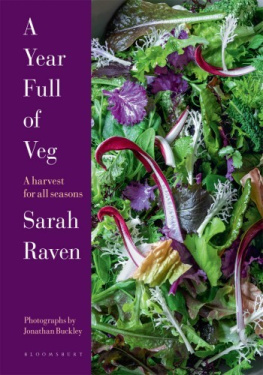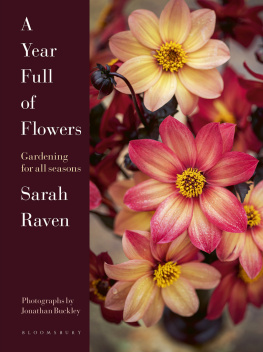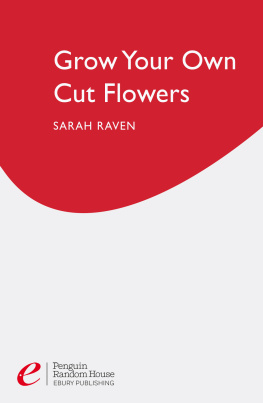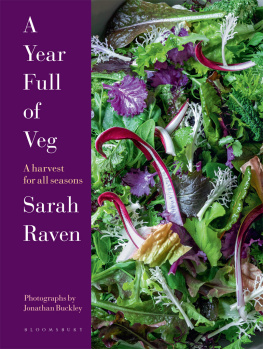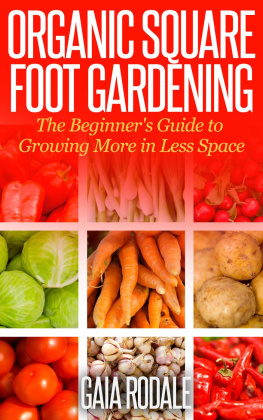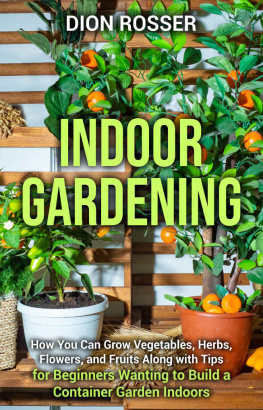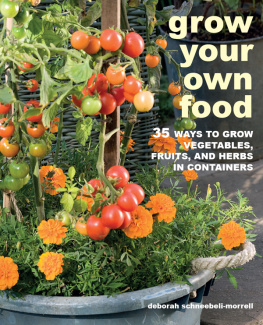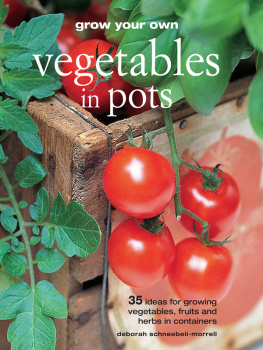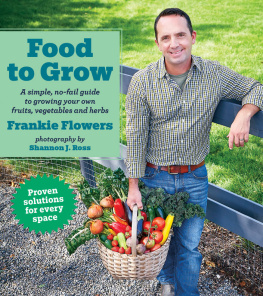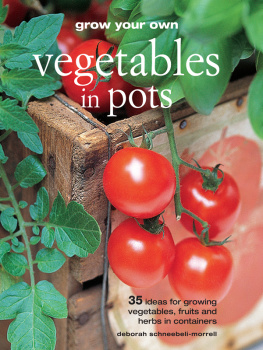Growing veg for abundance, flavour and ease
The best produce for your plot
Fresh greens on cold days
An ideal time to sow
A riot of colour and crops
Bridging the hungry gap
Summers tubers and flowers
A garden full of produce
Harvest, harvest, harvest
Warm-weather specials
A bright autumn feast
A forest of crinkly leaves
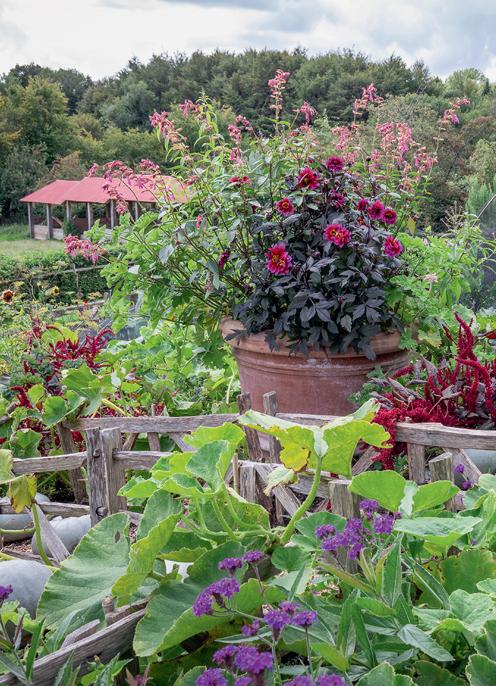
The central pot features dahlias, salvias and lemon verbena for edible flowers and tisanes; these tender perennials are brought in for winter and planted out again the following spring.
There are two things I want from my garden. It has to be beautiful, jam-packed with flowers, form and colour and it has to produce lots of delicious, fresh, homegrown food. Ive loved cooking since I was a child and have always known that homegrown is best, so a kitchen garden has been a long-standing priority.
Few things give me more pleasure and help me relax and wind down at the end of the day and at the weekend than wandering through the vegetable garden and into the greenhouse, first to see whats looking good and then to decide what to eat. It feels like a luxury not to have to travel anywhere to buy fresh food, and thats better for me and better for the environment.
Once you start growing your own, you can make sure your easy-to-grow favourites are there week by week, changing as the year goes on. In winter, I adore picking enough leaves for a punchy salad, as well as a basket of kale for dinners and lunches, and then Im thrilled when the rhubarb starts in spring, and the early broad beans and peas towards the end of the season. I love being able to dig new potatoes and pick courgettes and runner beans as baby vegetables, tiny and tender and at their absolute best in summer, and then by midsummer, enjoying tomatoes for breakfast, lunch and dinner. By autumn, meaty aubergines are on offer, and finally the squash, before were back around to the salads and kale again. Having this ever-changing freshness keeps my cooking on its toes, with a hand-picked harvest there whenever I want it.
If we grow too much for us (thats Adam, my husband, and I, plus sometimes a grown-up child or two, home for the weekend), then the team at Perch Hill get first dibs and pick what they like to eat. Anita Oakes is in charge of growing the vegetables here, with Josie Lewis overseeing all parts of the garden they have their favourites, as do the rest of the team, which all make it into the garden. Together, we grow colanders and colanders of fresh edibles, which we also integrate into our lunch menu in the Perch Hill caf when the garden is open. Pretty much nothing goes to waste.
Abundance and ease
In the parts of Perch Hill given over to vegetables, I have concentrated my efforts (over what is now thirty years) on trying to ensure that we get the maximum amount of delicious produce from every corner, throughout the year. Thats my number one driver as far as edibles go year-round, square-metre productivity. Its why most of the vegetable garden is devoted to cut-and-come-again plants, which we can harvest on one day, only to find that a week later we can do so again. These cut-and-come-agains provide us with the most efficient productivity. Thats why classics such as cabbages and maincrop potatoes dont usually make it into my plot, while salad leaves, plenty of herbs and leafy greens always do.
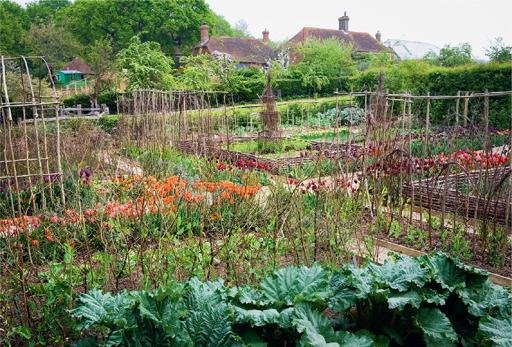
The vegetable garden at Perch Hill in spring, with rhubarb in the foreground.
We tend to grow one or two difficult-to-buy and exceptional-tasting potato varieties such as Pink Fir Apple and Ratte, but the whopper maincrops (such as Maris Piper) are easy to find, even organic ones, in supermarkets, greengrocers and through local veg-box schemes they are true space guzzlers, so Id say dont waste your precious garden beds on these.
For the sake of culinary completeness, you might think it crazy not to grow Brussels sprouts or cauliflowers for winter. But however handsome they are, unless you have lots of space, Id leave them to the farmers. They sit in the ground for a good six months before harvest and then, after all that waiting, give you only a small amount of food per square metre. And, as a brassica, they need netting protection against cabbage white caterpillars, which can add fiddle, time and work.
The plants we do grow must be both productive for a long time and easy to look after. I want to have a good range of crops, which means that no one plant should require too much attention. Ive tried growing ginger and sweet potatoes, for example, but wouldnt recommend either. They require a lot of faff, or at least more heat and better light than we can give them naturally in the UK; even with those essentials, they produce rhizomes and tubers that are only half the size were used to seeing in the shops.
Instead, I want the things I grow to germinate reliably and progress fast to harvestable size. Once there, they should be slow to bolt and sit at just the right picking stage for ages, offering kitchen ingredients on minimal TLC.
Abundance and easy growing is about finding crops that give you a great return, even when resources are limited. Each and every one of the edibles I recommend are life-enhancing and generously productive in any space anyone with a bit of garden, a yard, or even just some pots or window boxes, can grow at least a few of the crops I recommend in this book. You dont need great skill, knowledge or space to harvest fresh, healthy food.
Since my mid-twenties, wherever Ive lived Ive grown something edible. However small my home, Ive managed to prop a few pots on my doorstep. When I lived in a flat in London, I used to sow things to eat into long, narrow boxes that were made by my now husband Adam to fit our small window ledges. Our window boxes were supported by a couple of plant theatres mounted on either side of the backdoor to give us more growing room. All of these containers were densely planted with easy-to-look-after crops like parsley, lettuce, Swiss chard and herbs, all available for simple snipping right outside the kitchen door. There are so many benefits to growing in this way: firstly, if picked the correct way, these crops regrow, even in winter. And importantly, growing in containers is often done well out of the reach of neighbourhood cats.
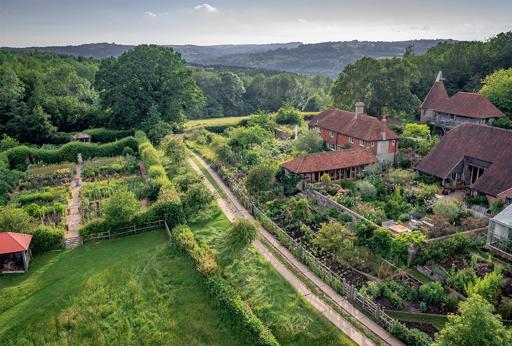
Perch Hill, a garden in the middle of a 90-acre organic farm in the densely wooded Sussex Weald.
A two-season system
What Ive found from our trials and experiments here at Perch Hill is that there are plants that can provide you with great things to eat for 365 days a year.
Most traditional approaches divide veg gardening into four seasons, but its simpler and more successful to stick to two. A useful general principle is to consider the 12 months to be split into two halves: early October to April, when its colder, greyer and rainier here in the UK; and May to September, when temperatures and light levels rise. That gives us two seasons and lots of edible plants that will fit into each. You just need to know what does well in which and select from the right group. There are a few must-haves (such as parsley and chard) that do well in both seasons, but these sorts of plants are rare.
Its safe to say that the hardy plants (mainly annuals) are the all-important givers for the October to April season: think kale, leeks (though these are not, of course, cut-and-come-again), chard, salad rocket and any of the mustards. The half-hardy or tender varieties such as tomatoes, basil, cucumber, courgettes, runner and French beans are the crops to concentrate on between May and September. Particularly if youre a beginner grower, this two-season system will help you hugely in growing food.
Next page
